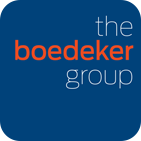
When creating an educational technology product there are a lot of elements to consider.
- Is formative assessment a part of the product?
- Summative assessment?
- What are the accessibility features?
- How does the product adapt to each individual user?
There’s a lot of features that are expected in K12 and higher ed products.
And that’s before you get into the content of your product that makes it unique to others on the market. So, how do you ensure that you’re building a product that will include everything that’s needed, without everything that’s not?
Market research can help you get the answers that you need.
Early stage, teams need to become experts in the areas they are publishing. They need to know about the available products in the space, key goals/priorities for the market, and the challenges they’re experiencing.
As they’re developing their product with those market goals/challenges in mind, teams need to be aware about external pressures that the. market is experiencing at federal, state, local, institutional, and departmental levels.
Only then are teams able to build out wireframes or prototypes that respond to those challenges/needs and gather feedback directly from the market on how their product is able to uniquely meet those challenges while also reaching parity where needed.
You don’t have to surpass your competitors on every single feature. You need to beat them on your value proposition, you need to match where it’s required, and where features are not needed/used/appreciated by the market — you can save your resources.
Ensure that your market research plan builds out what’s required, what’s nice to have, and what’s not going to move the needle on adoptions so you can spend your resources where it helps the most.
